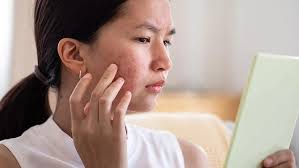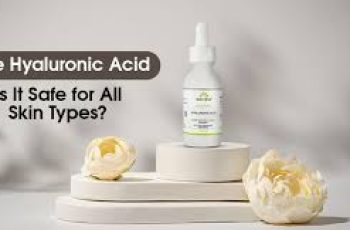
How to Treat Acne at Home Easily in 8 Proven Steps
Acne is a common skin concern, but that doesn’t mean it should become a permanent part of your life.
With the right steps, a consistent routine, and a little patience, you can reduce breakouts and enjoy healthy, glowing skin.
According to 2019 statistics, nearly 12% of Indians aged between 20 and 29 reported having acne or acne-related issues at some point.
While acne affects people of all skin types and ages, those with oily skin tend to be at a higher risk due to excessive sebum production.
This guide is designed to help you understand how to treat acne at home safely and effectively, without causing irritation, redness, or long-term scarring.
Let’s start with a fundamental but often misunderstood question—what exactly is the difference between acne and pimples?
Although many people use the terms interchangeably, acne and pimples are not exactly the same, especially if you’re planning a treatment approach.
Pimples are individual inflamed spots or pustules, while acne is the broader skin condition that causes recurring breakouts due to clogged pores.
So, treating acne means going beyond just reducing pimples—it requires addressing the root causes like oily skin, inflammation, or bacterial buildup.
Understanding these causes helps you choose the best treatment for your skin rather than applying quick fixes that don’t work long-term.
What Causes Acne?
The first step in healing acne is to understand what causes it in the first place—because you can’t treat what you don’t understand.
Acne usually begins when your skin’s pores become blocked with excess sebum (natural skin oil), dead skin cells, and sometimes dirt or bacteria.
The trapped sebum creates an ideal environment for bacteria such as Propionibacterium acnes, which inflames the area and leads to pimples.
External factors like pollution, humidity, poor hygiene, and even stress can increase oiliness and make breakouts worse over time.
People with oily skin are especially prone to acne, but anyone exposed to environmental pollutants or hormonal changes can develop it too.
In such cases, adopting an anti-acne skincare routine is critical not only to treat acne but also to prevent it from recurring in the future.
Is Acne Harmful to Your Health?
Medically speaking, acne is not life-threatening, but its impact on your emotional and social well-being can be significant.
Visible acne, especially on the face, can lead to low self-esteem, anxiety, or even social withdrawal if not managed appropriately.
Even when acne goes away, it can leave behind scars and pigmentation that take months—sometimes years—to heal completely.
That’s why prevention is key, and early treatment is the best way to reduce the chance of long-term marks and damaged skin.
Frequent breakouts may also be a sign of deeper issues such as hormonal imbalance, dietary deficiencies, or lifestyle-related stress.
Now that you know what acne is and why it forms, let’s explore 8 powerful home-based treatments that can help reduce and prevent it.
Step 1: Apply Ice to the Affected Area
Ice therapy is one of the easiest and most effective methods for reducing inflammation and swelling around pimples.
It’s a natural way to soothe angry red bumps, reduce pain, and minimize the risk of scarring without applying harsh chemicals.
To use this method, wrap ice cubes in a soft cloth or place them in a clean ziplock bag and gently press them onto the pimple.
Do this for 3–4 minutes multiple times a day; the cold helps reduce redness while shrinking the pores and improving circulation.
Avoid applying ice directly on the skin without a barrier, as it can cause irritation or minor frostbite if held for too long.
Regular use of this method can help speed up healing and reduce the appearance of blemishes within just a few days.
Step 2: Use a Crushed Aspirin Paste
Aspirin isn’t just for headaches—it contains salicylic acid, a key ingredient in many acne treatment products and spot treatments.
This anti-inflammatory compound helps unclog pores, exfoliate dead skin cells, and reduce swelling associated with pimples.
Crush one or two aspirin tablets with a spoon, then mix the powder with a few drops of water to form a smooth, thick paste.
Apply the paste to acne-prone areas or directly on pimples and leave it on for 10–15 minutes before rinsing off with lukewarm water.
Use this remedy only once or twice a week to avoid over-drying your skin, and always follow up with a gentle moisturizer.
This simple trick is both cost-effective and scientifically backed, making it a reliable option for mild acne cases.
Step 3: Apply Apple Cider Vinegar (Diluted)
Apple cider vinegar (ACV) is known for its antibacterial and pH-balancing properties, making it a popular choice for treating acne naturally.
Its acetic acid content kills acne-causing bacteria and helps dry out existing pimples while preventing future breakouts.
To avoid irritation, dilute one part ACV with three parts water, then apply the solution to your skin using a cotton pad.
Leave it on for 5–10 minutes, then rinse off with cool water. Repeat once a day—but skip this step if you have sensitive skin.
Some users may experience redness or a mild burning sensation, in which case it’s best to discontinue use immediately.
Always do a patch test before applying apple cider vinegar to your face, especially if you’ve never used it on your skin before.
Step 4: Try a Green Tea Face Mask
Green tea is packed with antioxidants, particularly Epigallocatechin Gallate (EGCG), which helps reduce inflammation and fight bacteria.
It also helps regulate oil production in the skin, making it highly beneficial for people prone to oily or combination skin.
Steep a green tea bag in hot water for a few minutes, then remove the leaves and mix them with a bit of aloe vera or honey.
Apply the mixture as a face mask and leave it on for 10–20 minutes to allow the antioxidants to penetrate your skin deeply.
Rinse off with warm water and pat dry. You can repeat this process two to three times a week for best results.
Drinking green tea daily can also boost your internal detoxification process, which contributes to clearer skin overall.
Step 5: Use a Dermatologist-Approved Acne Cream
When home remedies aren’t enough, a proven acne cream may be your best bet. These treatments often combine science and nature.
Look for formulas containing ingredients like benzoyl peroxide, salicylic acid, or tea tree oil, which target bacteria and inflammation.
Unlike DIY methods, these products are tested for safety and efficacy, providing faster and more noticeable results.
Apply the cream to clean, dry skin once or twice daily depending on the instructions and your skin’s tolerance level.
Some products also include soothing agents like niacinamide and chamomile to prevent redness and irritation.
If you’re unsure which one to use, consult with a dermatologist for a customized prescription or over-the-counter recommendation.
Step 6: Hydrate Skin With Hyaluronic Acid
Moisturizing acne-prone skin may sound counterintuitive, but dry skin can trigger more oil production and worsen breakouts.
Hyaluronic acid is a lightweight, non-comedogenic ingredient that locks in moisture without clogging pores.
Using a hyaluronic acid serum daily can help regulate sebum levels and improve your skin’s texture and hydration levels.
Apply it to damp skin after cleansing, followed by a gentle moisturizer to seal in hydration and balance your skin barrier.
Regular use also supports skin healing, which is essential if you’re using active ingredients like retinol or exfoliating acids.
One popular option is Dermatica HA Pure Serum, a dermatologist-recommended product designed for acne-prone and dehydrated skin.
Step 7: Apply a Face Mask Weekly
Exfoliating face masks can help unclog pores, remove impurities, and reduce the frequency of acne breakouts when used properly.
Choose masks with clay, charcoal, or sulfur—these ingredients absorb excess oil and provide gentle exfoliation without irritation.
Use a mask once or twice a week depending on your skin type and needs; overuse can strip the skin and cause more harm than good.
Make sure to follow up with a hydrating serum or light moisturizer to restore moisture after using a drying treatment mask.
This routine helps maintain healthy pores and provides a relaxing self-care experience while boosting your skin’s appearance.
Masks are a great addition to your regular skincare routine and can be adjusted based on your current skin condition.
Step 8: Consult a Dermatologist Online
If your acne is severe, persistent, or leaving scars, it’s time to speak to a skincare expert for a customized treatment plan.
The good news is that you can now consult a licensed dermatologist online from the comfort and privacy of your own home.
Many online skincare platforms offer virtual appointments, skin assessments, and even prescription deliveries to your doorstep.
This ensures you’re not wasting time or money trying random products that may not be suitable for your skin type.
A specialist can also help you monitor your progress, manage side effects, and make changes to your regimen if needed.
Professional advice combined with a strong home-care routine provides the best chance for long-term acne control and clear skin.
Final Thoughts
Acne is a manageable skin condition, and with the right approach, it doesn’t have to take over your confidence or daily life.
Stay consistent with your skincare, hydrate well, eat a balanced diet, and don’t forget to protect your skin from the sun daily.
Avoid picking at your skin, always remove your makeup before bed, and remember—clear skin is a journey, not an overnight success.
If you treat your skin kindly and stay patient, you’ll eventually see the healthy, blemish-free results you’re working toward.


